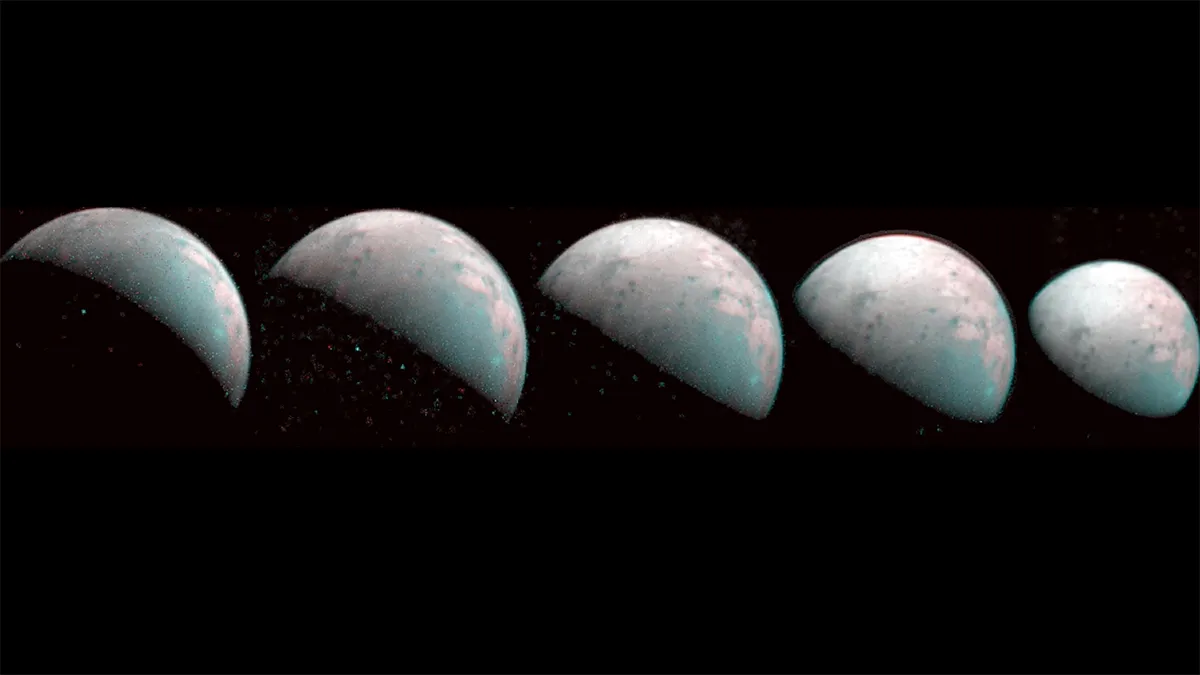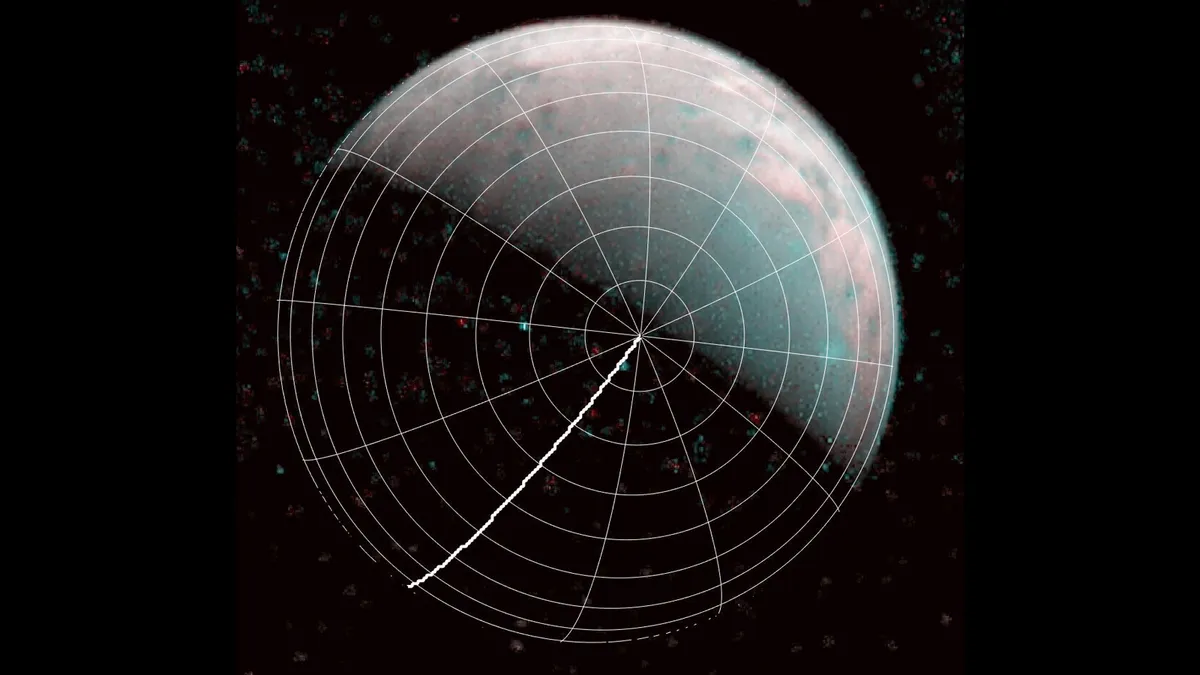
New images captured by NASA's Juno spacecraft at Jupiter reveal the moon Ganymede's north pole for the first time.
Juno spied the north polar region of the moon - the largest in our Solar System - as it journeyed inwards for a flyby of Jupiter on 26 December 2019.
The images were captured using the spacecraft's Jovian Infrared Auroral Mapper (JIRAM) instrument, giving mission scientists the first ever infrared map of the moon's northern region.
Ganymede is quite a specimen. It's the only moon larger than the planet Mercury, and it's made mostly of water ice. It's also the only moon in the Solar System with its own magnetic field.
Ganymede's ice is constantly being hit by a stream of charged particles, known as plasma, from Jupiter's magnetosphere, and so studying the moon in detail can reveal clues as to the evolution of the Jovian system and its 79 known moons.

"The JIRAM data show the ice at and surrounding Ganymede's north pole has been modified by the precipitation of plasma," says Alessandro Mura, a Juno co-investigator.
"It is a phenomenon that we have been able to learn about for the first time with Juno because we are able to see the north pole in its entirety."
Juno's closest approach of Ganymede saw it fly by the moon at a distance of about 100,000 km and collect 300 infrared images of the surface.
The flyby will also provide important information for scientists operating the upcoming JUpiter ICy moons Explorer (JUICE) mission, which is being headed by the European Space Agency and which will begin studying Jupiter and its icy moons Ganymede, Callisto and Europa in 2030.
Iain Todd is BBC Sky at Night Magazine's Staff Writer.

